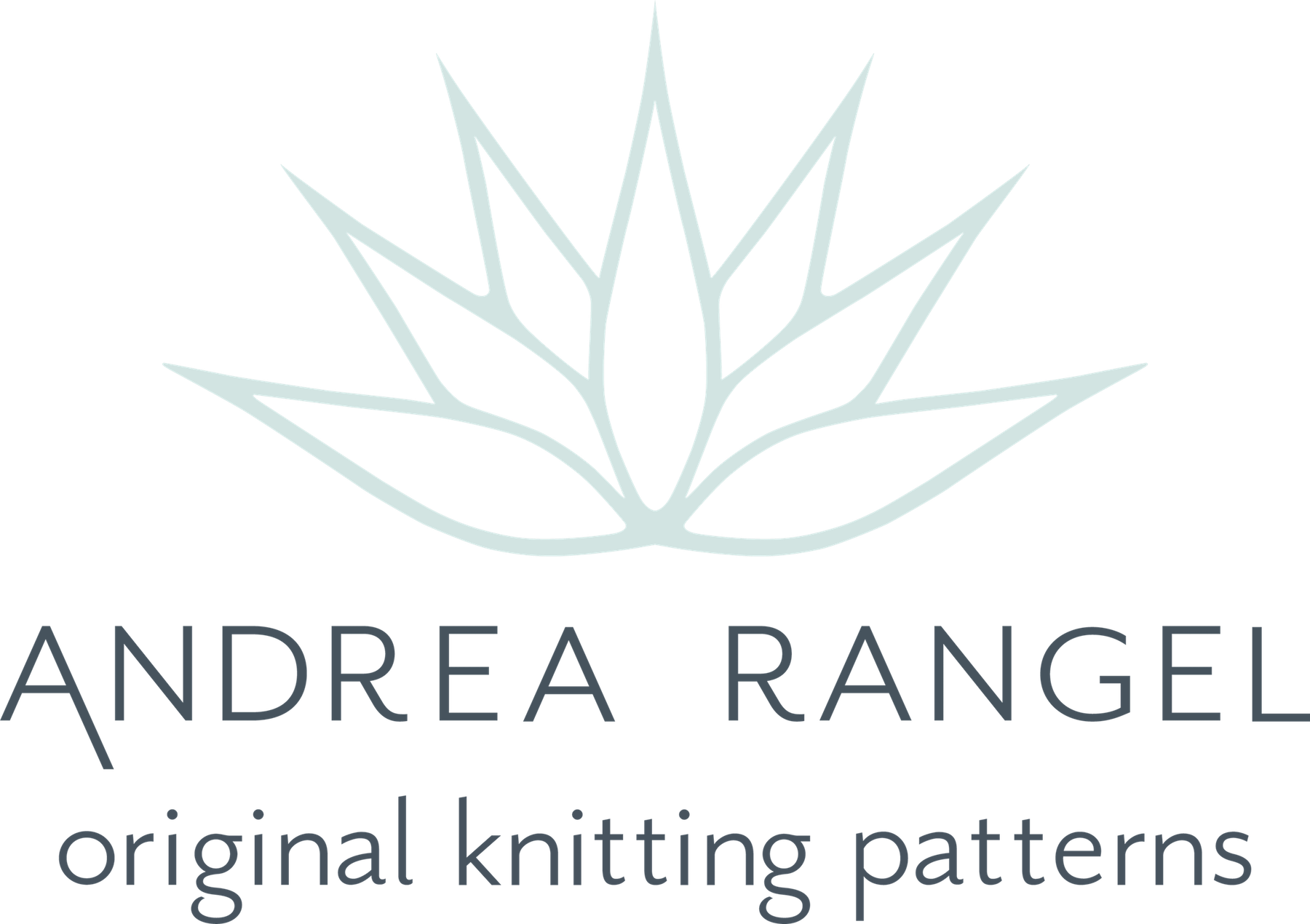Luxa
My recent design process has had an aspect of restraint about it. I’m very tactile and I have this love of color and texture that leads me to want more of all of it. I want all the lace patterns, plus stripes, and can I have some cables in that as well?
Lately, though, I’ve been admiring the work of some designers who have the ability to create objects of simple genius.* They utilize shape and clean lines to create garments that I badly want. A sweater that was a great inspiration was Hayward, by Julie Hoover. (I blogged about it last summer.) Knitting that sweater really got my hands accustomed to the rhythm of knitting a row, then purling a row. Plain Stockinette stitch became a joy, a relaxation, a pleasure.
So I’ve been thinking outside of my creative box. I’ve been thinking about what would happen if I only used a tiny bit of lace. What if I just focused my energy on making the smallest details perfect?
This task was made easier by some silvery-gray Knitting Boutique Susquehanna Lace yarn. It’s a blend of Polwarth and silk that shines and drapes, and has a semi-solid color that gives depth and richness to the fabric.
Though I was very tempted to add a diamond lace motif somewhere on this sweater, I held myself back. The result is Luxa, a sweet and simple tee with lovely details.
The neckline lays a bit below the collar bones in the front, but
 | |
|
scoops deeply in the back. The hem is embellished with a delicate lace ribbing pattern and the neckline and sleeve caps are finished off with slender I-Cord, one of my favorite finishing touches.
The design is worked as two separate pieces (front and back), which are seamed and then the sleeve caps are picked up and worked using short row shaping. I chose to work it in pieces for several reasons:
1. I chose to work the fabric at a relatively loose gauge (for the yarn) in order to create a softer, more draping fabric. Susquehanna Lace is on the heavy side of lace weight, but any time you work a yarn at a particularly loose gauge, seams can be helpful for reinforcing the structure of the garment.
2. The yarn has a significant silk content. Because silk is somewhat slippery, the resulting fabric is likely to grow in length. Seams can help prevent some of that growing.
3. I like the clean, finished look that seams can offer.
I hope you like the result as much as I do.
I'm also looking forward to teaching a class on this sweater next weekend at The Knitting Boutique in Baltimore. The class will cover all the techniques used in Luxa, like working lace, I-Cord bind off and attached I-Cord, as well as short row shaping, seaming, and blocking. I'll also be covering how to choose the right size and how to modify the sweater in case your measurements don't match the "standard."
I'm offering two other classes as well:
- Flow: A Lace-Edged Shawl
- Ablaze: A Color Work Cowl
I'd love to see you there!
If you can't make the classes, Luxa will be available from The Knitting Boutique website on March 1. In the meantime you can see the pattern listing on Ravelry.
* Some designers whose simple genius work I've been loving are Dianna Walla (one of the models for Luxa!), Julie Hoover, and Churchmouse Yarn and Teas.
 | |
|
The design is worked as two separate pieces (front and back), which are seamed and then the sleeve caps are picked up and worked using short row shaping. I chose to work it in pieces for several reasons:
1. I chose to work the fabric at a relatively loose gauge (for the yarn) in order to create a softer, more draping fabric. Susquehanna Lace is on the heavy side of lace weight, but any time you work a yarn at a particularly loose gauge, seams can be helpful for reinforcing the structure of the garment.
2. The yarn has a significant silk content. Because silk is somewhat slippery, the resulting fabric is likely to grow in length. Seams can help prevent some of that growing.
3. I like the clean, finished look that seams can offer.
I hope you like the result as much as I do.
 | |
|
I'm offering two other classes as well:
- Flow: A Lace-Edged Shawl
- Ablaze: A Color Work Cowl
I'd love to see you there!
If you can't make the classes, Luxa will be available from The Knitting Boutique website on March 1. In the meantime you can see the pattern listing on Ravelry.
* Some designers whose simple genius work I've been loving are Dianna Walla (one of the models for Luxa!), Julie Hoover, and Churchmouse Yarn and Teas.

